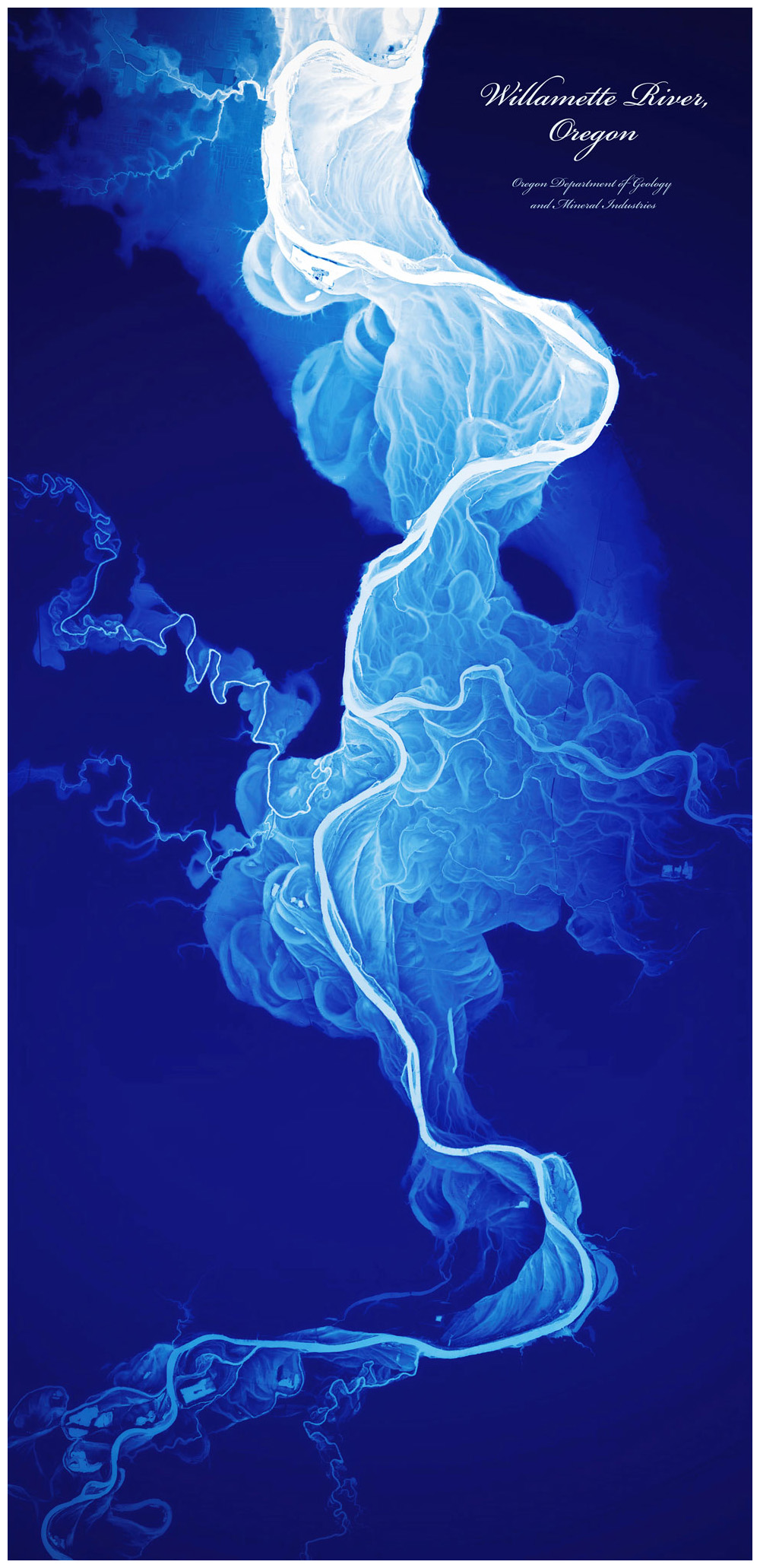The Historic Turns of a River
By Sandra J. Ackerman
Laser-mapping technology makes visible the meanderings of Oregon's Willamette River over the past 12,000 years.
Laser-mapping technology makes visible the meanderings of Oregon's Willamette River over the past 12,000 years.

DOI: 10.1511/2016.119.74
Conventional maps usually show a river as a static feature on the landscape, but this depiction doesn’t reflect the reality. Most rivers change continually in both depth and course, from one season to another and throughout the years. The Willamette River in Oregon is particularly interesting in this regard because of its “very dynamic and active floodplain,” according to Ian Madin, chief scientist of the Oregon Department of Geology and Mineral Industries.
The technology known as lidar (the term derives from “light radar”) can now reveal millennia of river history by gathering thousands of data points from an airborne laser device. The lidar unit sends laser pulses toward the ground; various surfaces—water, soil, rock, etc.—then reflect the pulses back, with each reflection recorded as a data point. By mapping the data points onto a grid, researchers can produce an image that removes vegetation and structures and shows the shape of the landscape in exquisite detail, in this case bringing to light the subtle topographic features that record the past forms of the river. The lidar image shown here provides evidence of many former channels of the Willamette River as it has migrated across the floodplain.

Understanding how the river has moved in the past helps scientists and engineers predict where it will go in the future and manage floodplain development to minimize risk. The detailed image of the landforms on the floodplain is used to help distinguish the geologic composition and soil types of the area. —Sandra J. Ackerman
Click "American Scientist" to access home page
American Scientist Comments and Discussion
To discuss our articles or comment on them, please share them and tag American Scientist on social media platforms. Here are links to our profiles on Twitter, Facebook, and LinkedIn.
If we re-share your post, we will moderate comments/discussion following our comments policy.